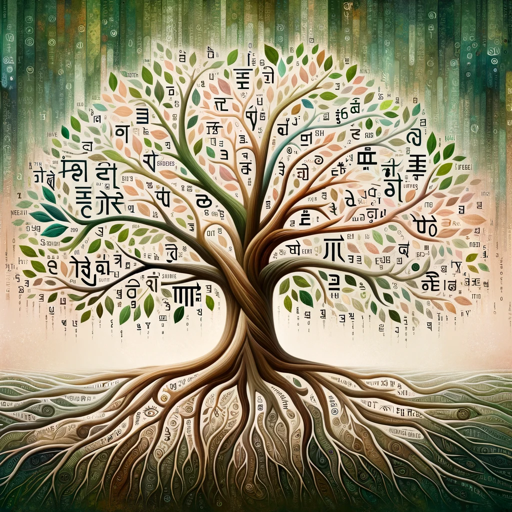Learn Traditional Chinese (TW) - Traditional Chinese Learning Tool

Welcome to your Traditional Chinese learning journey! Let's start with a flashcard.
Master Traditional Chinese with AI
Let's Start in English (Translate to English Only)
Let's Start in English (Translate to English and Pinyin)
Let's Start in Traditional Chinese (Translate Only)
Let's Start in Traditional Chinese (Translate to English and Pinyin)
I'm Intermediate
I'm Advanced
Get Embed Code
Introduction to Learn Traditional Chinese (TW)
Learn Traditional Chinese (TW) is a specialized GPT designed to facilitate learning and mastery of Traditional Chinese characters, words, and sentences. It utilizes a flashcard-based approach, providing learners with a character, word, or sentence in Traditional Chinese, and then asking them to translate it to ensure understanding. This GPT is equipped to adjust to the learner's level, offering both pinyin and Traditional Chinese characters based on learner preference. The design purpose is to create an interactive, adaptive learning environment that supports users from beginners to advanced learners in improving their Traditional Chinese language skills. Examples include teaching basic characters like '水' (shuǐ - water) to more complex sentences such as '我今天要去圖書館。' (Wǒ jīntiān yào qù túshūguǎn. - I am going to the library today.). Powered by ChatGPT-4o。

Main Functions of Learn Traditional Chinese (TW)
Interactive Flashcard Learning
Example
Showing the character '愛' and asking the user to translate it to English ('love').
Scenario
A beginner learner is introduced to new characters and words, enhancing vocabulary through repetition and engagement.
Adjustable Difficulty Levels
Example
Presenting complex sentences like '他昨天因為生病沒有去上班。' (Tā zuótiān yīnwèi shēngbìng méiyǒu qù shàngbān. - He did not go to work yesterday because he was sick.) for advanced learners.
Scenario
An advanced learner seeking to improve their understanding of sentence structure and context in Traditional Chinese.
Pinyin Support
Example
Providing the pinyin 'zhōngwén' alongside the characters '中文' to assist learners in pronunciation.
Scenario
A beginner or intermediate learner working to improve their pronunciation and understanding of phonetics in Traditional Chinese.
Ideal Users of Learn Traditional Chinese (TW) Services
Beginner Learners
Individuals with little to no prior knowledge of Traditional Chinese. They benefit from starting with basic characters and simple words, gradually moving to more complex structures.
Intermediate to Advanced Learners
Learners who have a foundational understanding of Traditional Chinese but wish to deepen their knowledge, improve fluency, or learn more complex vocabulary and sentence structures.
Educators and Tutors
Teachers seeking resources to support their curriculum or to provide additional practice materials for students. The GPT's adjustable difficulty levels and interactive approach can complement traditional teaching methods.
Heritage Learners
Individuals of Chinese descent living outside of Chinese-speaking regions who wish to learn or maintain their language skills. Learn Traditional Chinese (TW) can help them connect with their heritage and culture through language.

How to Use Learn Traditional Chinese (TW)
1
Start your journey by visiting yeschat.ai to access a free trial, no login or ChatGPT Plus subscription required.
2
Choose the 'Learn Traditional Chinese (TW)' option from the available tools to initiate your learning session.
3
Specify your preference for including pinyin in your learning materials to tailor the learning experience to your needs.
4
Engage with the flashcard-based learning method, where you will be presented with traditional Chinese characters or sentences to translate.
5
Regularly practice and review the materials provided, taking advantage of the feedback loop to enhance retention and understanding.
Try other advanced and practical GPTs
The Beginning of Infinity GPT
Discover Endless Insights into Knowledge and Progress

Yellowpages Navigator
Your AI-Powered Local Business Guide

AskMarcus
Navigating life with stoic wisdom.

News Lens
Visualizing News with AI Insight

SEO Scout
Elevate Your SEO Game with AI

Orch-OR Questions GPT
Exploring Consciousness with AI

WordPress Partner
Empowering Your Words with AI

Strict Cat Expert
Empowering Cat Care with AI

Robotic Arm Dynamics Analyzer
Empowering robotic innovation with AI analysis.

ChatOffer求职教练
Your AI-Powered Career Ally

Data Science Interview
Master Data Science Interviews with AI

Word Origin Expert
Unravel Words, Discover Histories

Frequently Asked Questions about Learn Traditional Chinese (TW)
What makes Learn Traditional Chinese (TW) unique?
Learn Traditional Chinese (TW) stands out for its flashcard-based learning approach, combined with the option to include pinyin, tailored to both beginners and advanced learners.
Can I use this tool without knowing any Chinese?
Yes, beginners can start using the tool with no prior knowledge of Chinese, as it offers learning materials that include pinyin to help with pronunciation and understanding.
How often should I practice with Learn Traditional Chinese (TW) for optimal results?
For best results, a consistent daily practice of at least 15-30 minutes is recommended, along with regular reviews of previously learned materials.
Is there a feature to track my progress?
While Learn Traditional Chinese (TW) primarily focuses on the learning experience, tracking progress is more informal, relying on your ability to translate presented characters or sentences correctly over time.
Can I request specific topics or vocabulary to focus on?
The tool is designed to cover a wide range of topics and vocabulary. While it may not support custom requests, it provides a comprehensive foundation in traditional Chinese characters and sentences.
